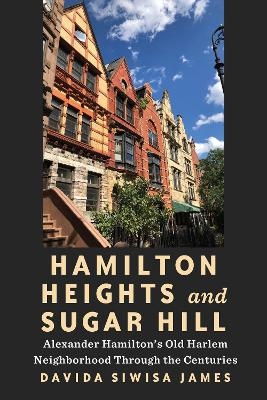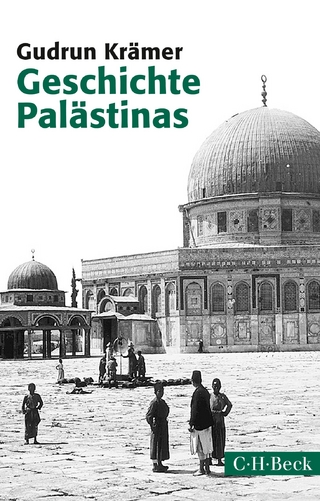
Hamilton Heights and Sugar Hill
Fordham University Press (Verlag)
978-1-5315-0614-8 (ISBN)
It was the neighborhood where Alexander Hamilton built his country home, George Gershwin wrote his first hit, a young Norman Rockwell discovered he liked to draw, and Ralph Ellison wrote Invisible Man. Through words and pictures, Hamilton Heights and Sugar Hill traces the transition of this picturesque section of Harlem from lush farmland in the early 1600s to its modern-day growth as a unique Manhattan neighborhood highlighted by stunning architecture, Harlem Renaissance gatherings, and the famous residents who called it home.
Stretching from approximately 135th Street and Edgecombe Avenue to around 165th, all the way to the Hudson River, this small section in the Heights of West Harlem is home to so many significant events, so many extraordinary people, and so much of New York’s most stunning architecture, it’s hard to believe one place could contain all that majesty. Author Davida Siwisa James brings to compelling literary life the unique residents and dwelling places of this Harlem neighborhood that stands at the heart of the country’s founding. Here she uncovers the long-lost history of the transitions to Hamilton Grange in the aftermath of Alexander Hamilton’s death and the building boom from about 1885 to 1930 that made it one of Manhattan’s most historic and architecturally desirable neighborhoods, now and a century ago. The book also shares the story of the LaGuardia High School of Music & Art, one of the fi rst in the nation to focus on arts and music. The author chronicles the history of the James A. Bailey House, as well as the Morris-Jumel Mansion, Manhattan’s oldest surviving residence and famously known as George Washington’s headquarters at the start of the American Revolution.
By telling the history of its vibrant people and the beautiful architecture of this lovely, well-maintained historic landmark neighborhood, James also dispels the misconception that Harlem was primarily a ghetto wasteland. The book also touches upon the Great Migration of Blacks leaving the South who landed in Harlem, helping it become the mecca for African Americans, including such Harlem Renaissance artists and luminaries as Thurgood Marshall, Count Basie, Duke Ellington, Mary Lou Williams, Paul Robeson, Regina Anderson Andrews, and W. E. B. Du Bois.
DAVIDA SIWISA JAMES lived in Morningside Heights as a child and Sugar Hill as a young woman. She has a BA in English from UCLA and attended Penn State Dickinson Law in Carlisle, Pennsylvania. She has been a university public relations director, a freelance journalist for the twice Pulitzer Prize–winning Virgin Islands Daily News, and has a twenty-year management career in performing arts finance and marketing. She has published nonfiction books, essays, poems, a play, and an award-winning short story, “The Commute.” She resides in Los Angeles, CA.
Author’s Historical Note | ix
Dyckman and Hamilton Maps | xi
Note on Spelling | xiii
Preface | xv
The Neighborhood | xxi
1. Dutch Beginnings and Native Americans | 1
2. The Making of Harlem Heights | 9
3. Harlem Land Grants, Mount Morris, and a Revolution | 22
4. Harlem Grange and the Duel | 38
5. The Jumels, the Street Grid, and Audubon | 55
6. The Bailey Mansion, St. Luke’s, and a Building Boom | 76
7. The Great Migration and the Morris Museum | 100
8. The Hamilton Museum and the Hamilton Theatre | 124
9. The Harlem Renaissance | 139
10. The Heights Identity and the Black Mecca | 170
11. Jazz Clubs, The Numbers, and Firsts | 193
12. The Advent of the Sixties, Generational Changes, and the Arts | 212
13. A Neighborhood’s Changing Face | 236
14. Parlor Jazz and the Great Renovation | 253
15. Changing Demographics and a Revived Hamilton Heights | 279
16. Bailey House, Jazz, and the Renaissance Remix | 302
17. Where It Leads | 336
Afterword | 345
Addendum A: Excerpted Harlem Ordinances and Land Patents | 349
Addendum B: Photos Past and Present | 353
Acknowledgments | 355
Notes | 359
Selected Bibliography | 375
Index | 383
| Erscheinungsdatum | 05.03.2024 |
|---|---|
| Zusatzinfo | 128 b/w illustrations |
| Verlagsort | New York |
| Sprache | englisch |
| Maße | 152 x 229 mm |
| Gewicht | 703 g |
| Themenwelt | Sachbuch/Ratgeber ► Geschichte / Politik ► Regional- / Landesgeschichte |
| Geisteswissenschaften ► Geschichte ► Regional- / Ländergeschichte | |
| Technik ► Architektur | |
| ISBN-10 | 1-5315-0614-3 / 1531506143 |
| ISBN-13 | 978-1-5315-0614-8 / 9781531506148 |
| Zustand | Neuware |
| Informationen gemäß Produktsicherheitsverordnung (GPSR) | |
| Haben Sie eine Frage zum Produkt? |
aus dem Bereich


